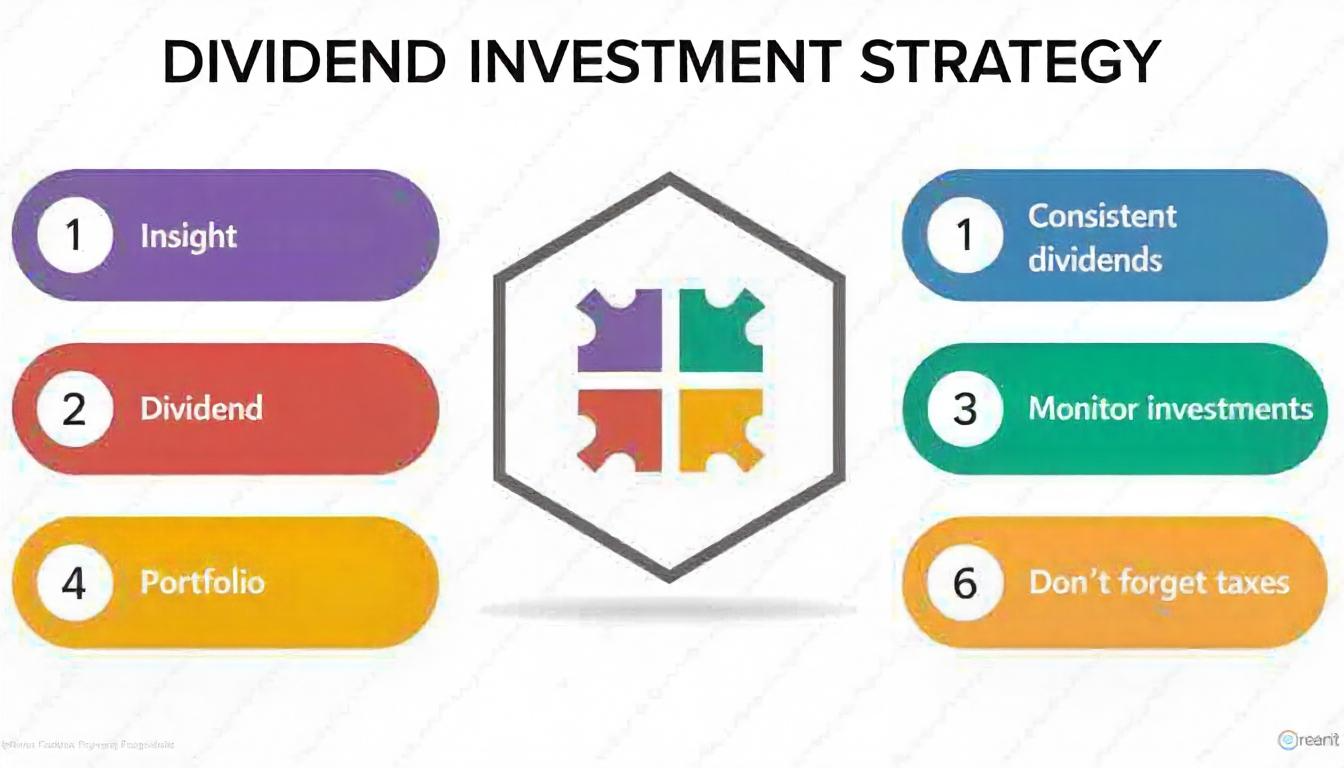Practical Guide to Dividend Investing: How to Build a Reliable Income Stream
Practical Guide to Dividend Investing: How to Build a Reliable Income Stream
Dividend investing can be a powerful way to generate passive income and build long-term wealth. By focusing on companies that pay reliable dividends, you can create a steady cash flow while also benefiting from stock price growth. This practical approach to dividend investing will help you balance risk, income, and long-term growth. Here's how to get started:
1. Set Clear Investment Goals:
- Income vs. Growth: Are you looking for immediate income (like during retirement), or would you prefer to reinvest your dividends for future growth?
- Risk Tolerance & Time Frame: Know how much risk you’re comfortable with and how long you plan to invest. This will guide your decisions on stock selection and portfolio structure.
2. Choosing the Right Stocks:
- Dividend Yield: Look for a yield between 2-6%. This range typically balances steady income with sustainable growth. Be cautious of stocks offering yields over 8%, as they may indicate financial stress.
- Dividend Growth: Focus on companies with a proven history of consistent dividend increases (at least 5 years). Dividend Aristocrats and Kings are prime examples.
- Payout Ratio: A lower payout ratio (ideally <60%) suggests that a company can afford to keep paying dividends. For sectors like REITs and MLPs, ratios closer to 90% are acceptable, but always consider free cash flow for better insight.
- Company Fundamentals: Choose stocks with strong financial health, including low debt, solid cash flow, and competitive advantages that protect them from market disruptions.
3. Diversify Your Portfolio:
- Sector Diversification: A well-rounded portfolio should include both defensive sectors (like utilities and consumer staples) and cyclical ones (like technology and industrials). This helps mitigate risk during market shifts.
- Geographical Diversification: Consider global exposure (e.g., through international dividend ETFs) to tap into growth opportunities outside your home country.
- Mix of Assets: Combine individual dividend stocks with ETFs and even REITs/MLPs for added yield and tax efficiency.
4. Reinvest Dividends to Maximize Growth:
- Dividend Reinvestment Plans (DRIPs): Reinvesting your dividends can help you harness the power of compounding. Look for platforms that allow fractional share purchases.
- Manual Reinvestment: If you prefer more control, you can manually reinvest dividends into undervalued stocks or new opportunities that align with your goals.
5. Be Tax Efficient:
- Tax-Advantaged Accounts: Using tax-deferred accounts like IRAs and 401(k)s is an excellent way to delay taxes on your dividends, letting them grow more efficiently.
- Qualified Dividends: Aim for stocks that pay qualified dividends (usually taxed at a lower rate) in taxable accounts to reduce your tax burden.
6. Manage Risks Carefully:
- Emergency Fund: Set aside 3-6 months of living expenses in an easily accessible account to avoid needing to sell investments during market downturns.
- Rebalancing: Review your portfolio at least once a year (or after major market shifts) to make sure your investments still align with your objectives.
- Monitor Your Investments: Regularly check in on your stocks’ performance, particularly if there’s news about dividend cuts or negative changes in a company’s fundamentals.
7. Use Smart Tools to Execute Your Strategy:
- Dollar-Cost Averaging: Investing a fixed amount regularly helps smooth out market volatility, reducing the risk of buying at the wrong time.
- Brokerage Tools: Take advantage of commission-free platforms (like Fidelity or M1 Finance) and stock screeners to help you find high-quality dividend stocks.
- Track Your Progress: Use apps like DividendTracker or create a simple spreadsheet to monitor your dividend income, portfolio yield, and overall performance.
8. Avoid Common Mistakes:
- Don’t Chase Yield: A high yield may be tempting, but it’s important to ensure the dividend is sustainable based on the company’s cash flow and earnings.
- Diversify to Avoid Overconcentration: Aim for no more than 5% of your portfolio in any single stock to reduce the risk of major losses if that company’s performance drops.
- Don’t Ignore Valuation: It’s easy to get excited about a stock’s dividend potential, but always consider the stock’s price and valuation metrics (like P/E and P/B) to avoid overpaying.
9. Sample Portfolio Breakdown:
- Core Holdings (60%): Include reliable ETFs like SCHD or VYM for stability and broad market exposure.
- Dividend Growth Stocks (25%): Invest in Dividend Aristocrats (such as Johnson & Johnson or Procter & Gamble) for consistent income and growth.
- Higher Yield (10%): Consider REITs (like Realty Income or National Retail Properties) or MLPs (such as Enterprise Products Partners) for additional yield.
- International Exposure (5%): Include international dividend ETFs (like IDV) or foreign stocks (e.g., Nestlé) for global diversification.
10. Keep Learning and Adapting:
- Stay Up-to-Date: Follow financial news and company earnings reports to keep track of dividend changes, market shifts, and sector trends.
- Be Flexible: Adjust your strategy if there are significant changes in interest rates, inflation, or other macroeconomic factors that could affect your dividend investments.
Final Thoughts:
- Patience Pays Off: Dividend investing is a long-term game. The key is allowing your dividends to compound over time and sticking to your strategy.
- Discipline During Volatility: Market downturns can be unsettling, but sticking to your plan and focusing on quality dividends will pay off over the years.
- Focus on Total Returns: Keep an eye on both dividend income and the potential for stock price growth to ensure your overall portfolio is moving in the right direction.
By blending solid research, diversification, and a disciplined reinvestment strategy, dividend investing can provide a reliable income stream and significant wealth-building potential over the long term. Stick to your plan, and the results will follow.




Comments
Post a Comment